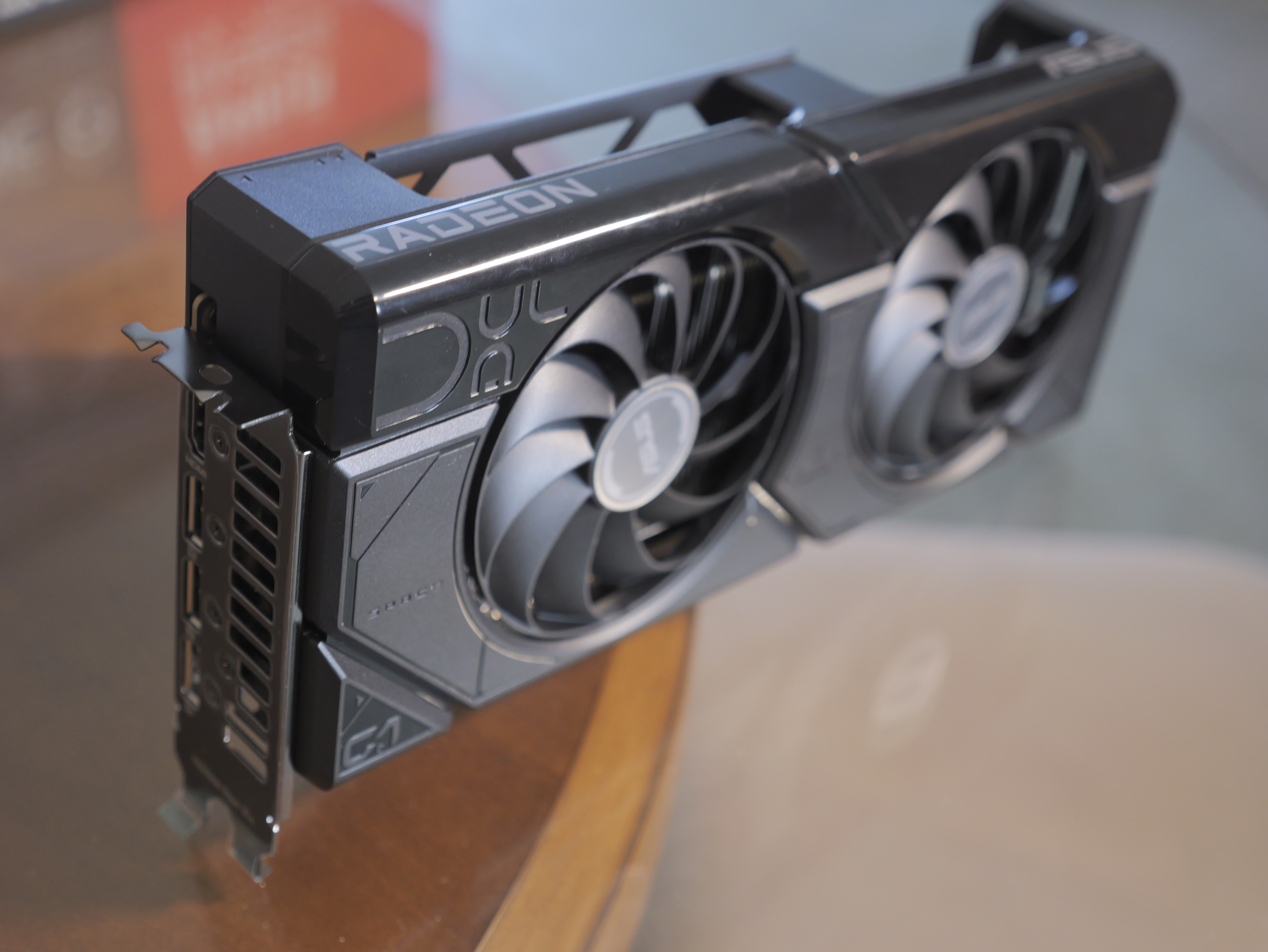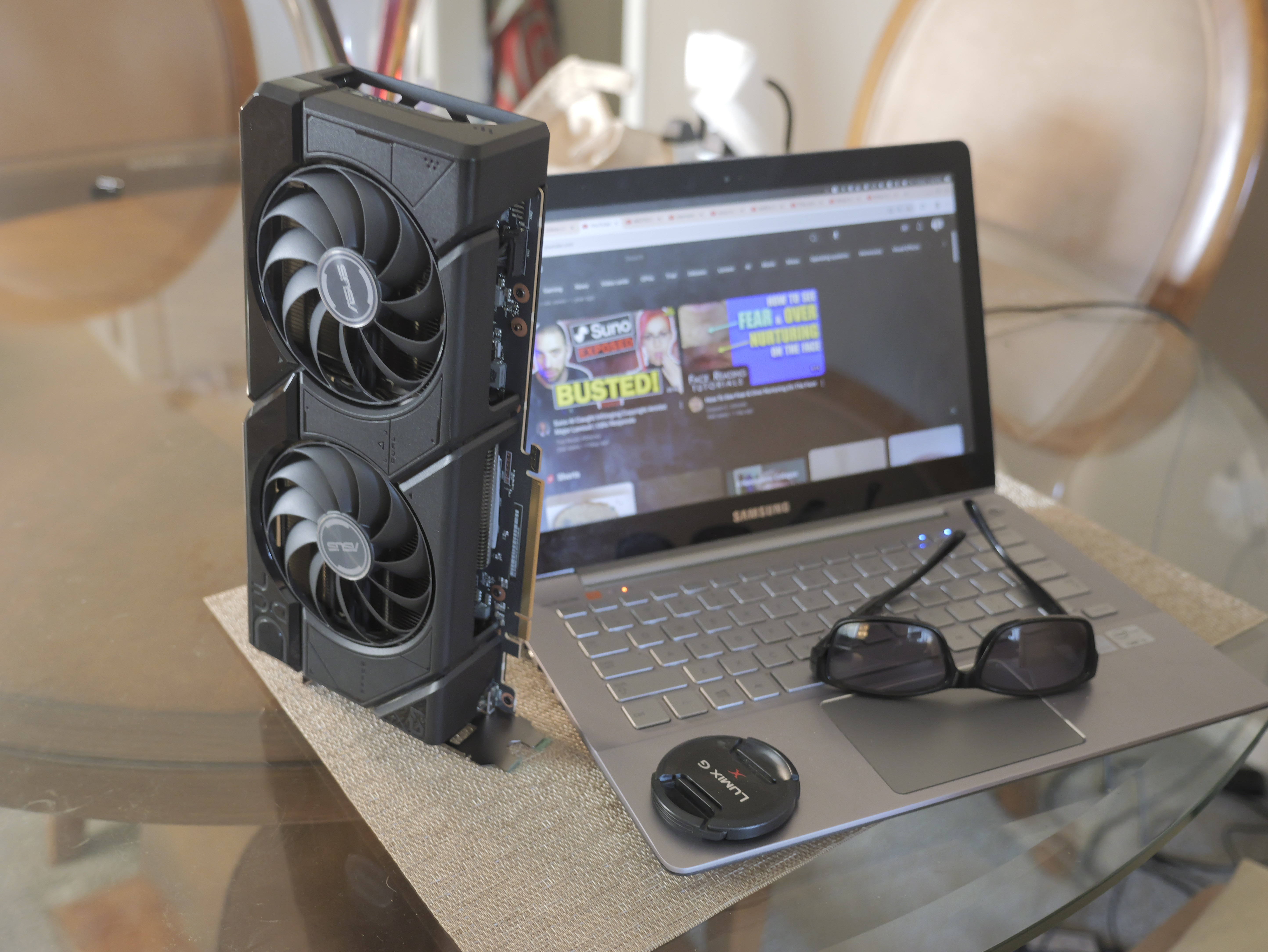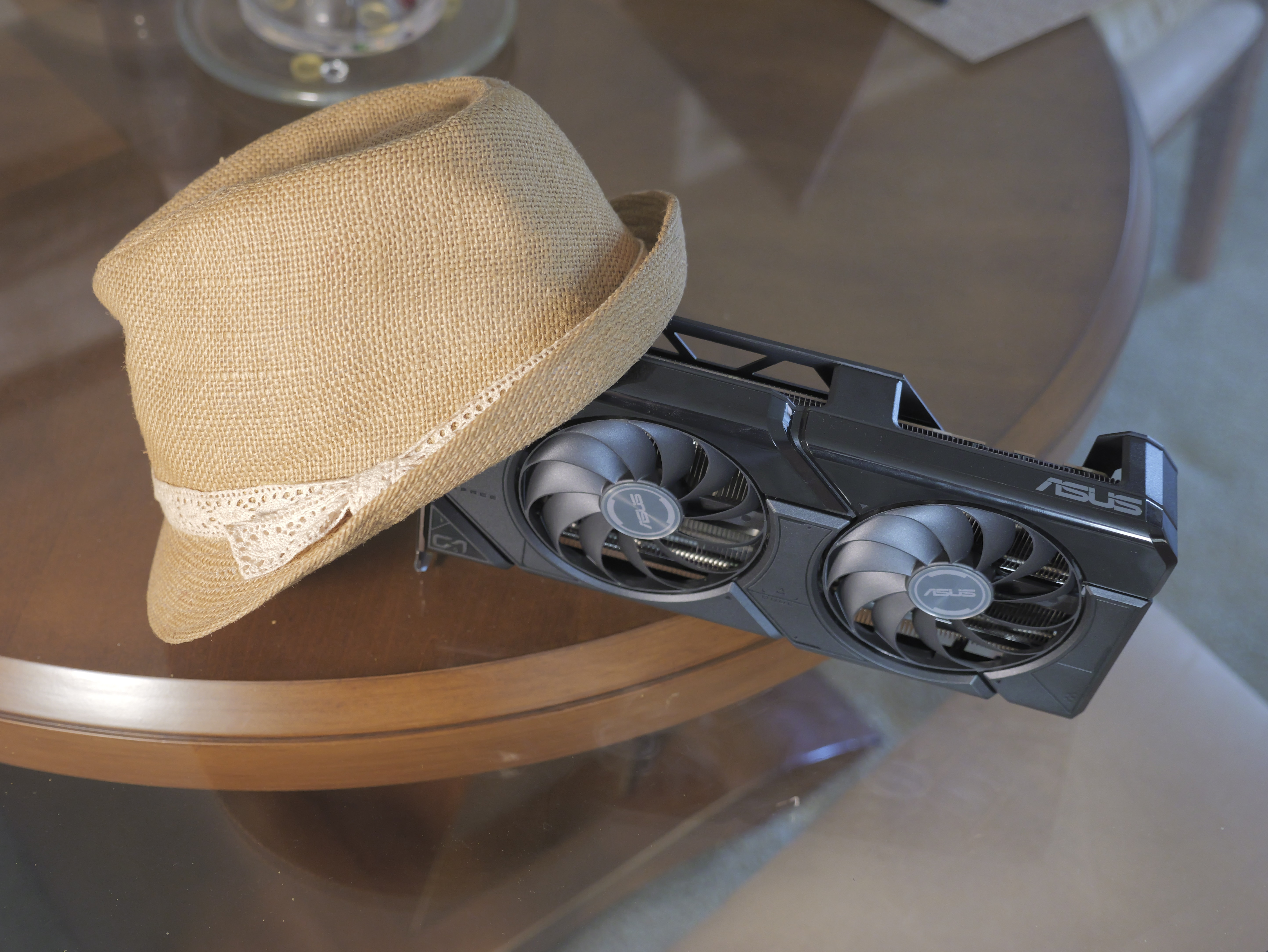
Professional digital artists have been using “gamer” video cards for decades. Ever since first realizing that the cost of true professional workstation cards was in the thousands. While gamer cards could deliver some mixed results years back, they have become common and a reasonably safe bet for modern computers.
AMD’s Radeon RX 7000 line of cards is a good example. It features the latest AMD technology, including RDNA 3 architecture, computing units for raytracing and AI work, enhanced AV1 video encoding (streaming, rendering), fast clock speeds with a wide bus, and rising memory on all the cards.
In fact, with a great new lineup of RX 7000 cards this past year, 6 cards going from their entry RX 7600 up to their RX 7900 XTX top of line, one might think the line had been fully fleshed out. But along comes this new card, the RX 7900 GRE with 16GB, which we are told fits neatly between the RX 7800 XT, and the RX 7900 XT (second from the top). Just where did this anomalously named card come from?
The truth is, this card isn’t technically new. The GRE moniker stands for “Golden Rabbit Edition”, and was a China-only card all of last year. Why bring it to the US and other markets now? It could be that AMD, and partners like Asus, felt the leap between the ASUS Dual RX 7800 XT (with 16GB at $480US) and the ASUS TUF Gaming RX 7900 XT (with 20GB at about $800US) was simply too large a gap. And clearly, they would have been right.

Price
Arguably, today’s sweet spot for graphics cards is around $500. Much below that retail number today, and the cards begin to lack memory and the power needed to run demanding modern graphics software efficiently. As one goes to more costly cards, your return on investment - i.e. power vs cost proposition - begins to tank. Yes, there is more power out there, but it starts to cost more dearly. Not long ago such a “sweet spot” hovered closer to $300-350US, but times change.

NVIDIA or AMD: which is better?
The question that gets asked every day is, if content creators should go with AMD or NVIDIA GPUs. To answer this question, alas, we must still begin with “it depends”. It depends on use, platform and cost.
Best use: Clearly, high-end gaming and perhaps high-end 3D creation can both benefit from NVIDIA’s more powerful raytracing cores. But while slower, AMD’s raytracing is no slouch. Most users will not notice much difference. For general graphics work either AMD or NVIDIA can serve you very well. On a very personal note, this author has had far more stable experiences with AMD cards, and their software, across many-many years. An intangible that should likely be a minor consideration.
What platform: Which operating system you run can influence which card maker might be a better option. In its day Macs ran mostly Radeon cards. Now they no longer even use PCI-based GPUs. So Windows is today’s key market, where both companies have solid drivers and software. Though AMD’s Adrenaline interface and controls were clearly superior, that may be changing. On the continually growing Linux platform, both companies need to step up their driver support.
For example, while Radeon drivers have been open source for some time, AMD had yet to issue driver support for Ubuntu 24, released months before this review. Thus forcing an OS downgrade to version 22. And to get the gaming card fully operational, AMD’s “pro” drivers needed to be installed. A confusion AMD doesn’t make the least bit clear.
Finally, as to cost. Most creatives tend to feel they get more bang for their buck on AMD. And that for the last generation or two, NVIDIA has been guilty of some price gouging for access to their more cutting-edge tech.
That said, this GRE card’s most direct competition over at Team Green would be their RTX 4070, which major benchmarks show matches the GRE in most speed tests. And sticking with Asus, their Dual 4070’s retail street price comes in around the same price as the GRE.
But before assuming they are interchangeable, here are two areas they differ: When we look at their power requirements, the NVIDIA card maxes out at 200 watts, whereas the GRE pulls a significantly higher 260 watts max. Another big difference: The GRE comes with 16GB of video RAM, compared to the 4070’s tighter 12GB.
But of course it’s the benchmarking that we hope will shake it all out. And it mostly does:

Performance
Most benchmark tests have many variables. Still, we can clearly see that if 3D is your thing, NVIDIA is leading the way in rendering speed. Puget testing also contains many variables, so should be viewed in broad strokes. But Puget, Passmark and User Benchmark all place the two competing cards fully neck and neck. By now we know what we are getting.

Who is it for?
In the art studio, this card is for creatives who want a reliable card, from a reliable vendor such as ASUS. Based on the speed tests, Photoshop-style graphics work, along with video editing are the best uses for this powerful card. Its extra 4 GB of RAM over the 4070 may very well come in handy with large graphic projects.
This card will do fine for 3D work, don’t let anyone tell you differently. It’s just that if you know in advance that such work is your daily mainstay, there may be better options. Perhaps going with the 7900 XT, or going green with NVIDIA.







